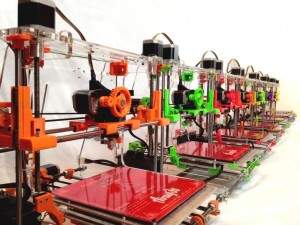Types of 3D Printing
Types of 3D Printing? There are so very many types!

Types of 3D printing. 3D printers have turned out to become the darling of every techie.
In fact, 3D printers have emerged as the “trendiest” of all mass-consumed high-end technologies.
For many cutting edge, innovative companies, 3D printers are a must have.
Little do most of us realize however, that 3D printing is just an umbrella term that encompasses four different types of technologies.
One online resource explains that all 3D printers involve “additive fabrication,” a type of process designed to print objects by adding material in thin layers to get the job done. Each technology aims to provide unique effects which are impressive and of great benefit to the consumer market.
1. 3D Printing
Wikipedia has this to say about 3D printing:
"Additive manufacturing or 3D printing [1] is a process of making a three-dimensional solid object of virtually any shape from a digital model. 3D printing is achieved using an additive process, where successive layers of material are laid down in different shapes.[2] 3D printing is considered distinct from traditional machining techniques, which mostly rely on the removal of material by methods such as cutting or drilling (subtractive processes)."
3D printing also can work in by layering powder substrate, binding it using pigmented glue. So far, this technology is the only one of its kind to date, and has the capacity to print in full color.
2. Fused Deposition ModelingAlso known as FDM, fused deposition modeling is done by heating and squeezing a certain plastic thread. This technology was introduced to the market by Stratasys. The trademark also belongs to the company. FDM is one of the most affordable types of 3D printing, with cost of materials and equipment starting at $15,000.
3. Stereolithography
Stereolithography is a type of 3D printing that involves “tracing a beam of UV light over a photosensitive pool of liquid.” What’s great with stereolithography is the top-quality detail and smooth surface finish of the resulting product. Stereolithography technology is also one of the most interesting of its kind, producing very smooth and high-resolution products. After printing a material, the item is raised elegantly out of the photopolymer solution. It is in fact more dramatic than the dust off or breaking of supports required by other systems. The Viper line of stereolithography apparatuses (SLA’s) offered by 3D Systems is where some of the best quality 3D outputs come from.
4. Selective Laser Sintering
SLC infused 3D and laser printing, makes this technology quite interesting for those who are looking for excellent printing technology. The process can be likened to stereolithography, where the UV light is replaced by a laser and a vat of liquid in a powdered base. One of the best things about SLS is that it can print on different surfaces and over a variety of materials, ranging from pater and plastic to ceramic and wood. There are also instances when SLS technology can be applied to more expensive tooling processes.
Click Here to read about Thermoplastics - The Best Choice for 3D Printing